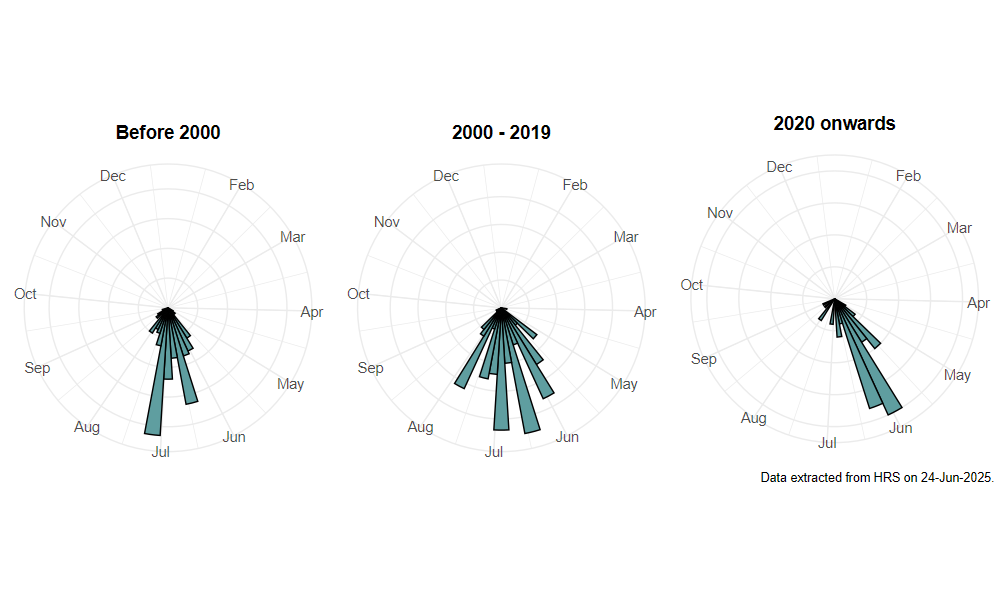Lejogaster tarsata (Megerle in Meigen, 1822)
Identification
Identification difficulty = 3. ![]()
![]() according to Ball & Morris, 20241
according to Ball & Morris, 20241
Synonymy
Lejogaster splendida (Meigen) in Stubbs & Falk (1983)2.
Biology
The larva is aquatic and has been found among floating, decaying vegetation in a pond. Adults are most often found in or near coastal marshes, for example at the fringes of mildly brackish ditches, or in the transition zone between fresh and saline water in coastal flushes. They visit flowers, especially white umbels and Ranunculus.
Flight period
The following plots show the number of unique records per week excluding those reported to be of immature stages.

Status
Lower Risk (Nationally scarce) - Ball & Morris, 20143. Notable - Falk, 19914.
Distribution
Although this is mainly a coastal species in Britain there are confirmed inland records, but confusion with L. metallina makes the distribution difficult to assess. It appears to be a scarce species generally, but can be abundant at some localities.

Trends
The following plots show the Frescalo TFactor vs year and a map of the rescaled frequency (all records) for the species.
-
Ball, S., & Morris, R. (2024). Hoverflies of Britain and Ireland. WILDGuides (3rd ed.). Oxford: Princeton University Press. ↩
-
Stubbs, A., & Falk, S. (1983). British Hoverflies: An Illustrated Identification Guide (1st ed.). Reading: BENHS. ↩
-
Ball, S., & Morris, R. (2014). A review of the scarce and threatened flies of Great Britain. Part 6: Syrphidae. ( No. 9). Species status (pp. 1–130). Peterborough: JNCC. ↩
-
Falk, S. (1991). A review of the scarce and threatened flies of Great Britain. ( No. 39). Research and Survey in Nature Conservation (pp. 1–194). Peterborough: NCC. ↩